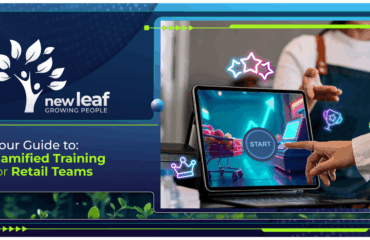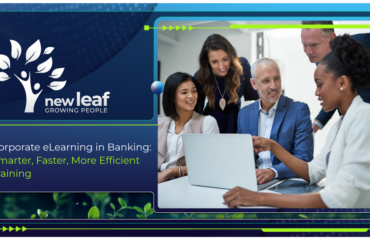
Learners Have Come to Expect More Than Just Classroom-Style Learning
Learning, especially the kind of learning that occurs in a classroom-style setting, has become more than just receiving information and regurgitating it back on a test. Learners want to be able to access training anytime, anywhere; they want relevant content that addresses their needs; and they want the ability to take control of their own learning process.
Demanding much? Well, maybe not. It is already well-documented that these sorts of requests are not uncommon. While the classroom is still a relevant learning environment, it might just be time to look into investing in online learning.
Why opt for an LMS?
At risk of stating the obvious, let’s discuss what an LMS actually is.
Learning Management Systems (LMS) are software that manages learning content, courses, and learners in an organisation. They help streamline the training process and ensure that the learning objectives are met.
In a nutshell – an LMS provides a centralised platform where you can store your training material in one place with all its associated content like video lessons or PDFs etc. which can be accessed by your employees across multiple devices like laptops, tablets and mobile phones.
It also allows you to create customised courses for specific groups or individuals within your organisation, so that they receive personal attention on their needs without having to leave the office (or even their beds).
How to Choose the Perfect LMS?
When it comes to choosing the right LMS, it can be overwhelming to consider all the options available. It’s like going to a buffet with endless food choices and feeling like you need to add everything to your plate, but just like at a buffet, if you try to cram in too much, you might end up feeling sick – so choose wisely!
It is important to know what you need from a learning management system. This will help you choose the right one for your organisation and ensure that it meets all of your needs. Here are some key questions to ask yourself:
- What are my business’s key requirements?
- What do I want this system to do for me?
- How will it help me achieve my goals?
- What budget do I have available for this project?
- Do any other costs come with purchasing a new software platform (e.g. training time, conversion of content, set up fees, and licencing models)?
The Deciding Factors When Choosing Your LMS
Once the above is well established, there are seven things to look out for when selecting your LMS:
- Cost
While the cost of an LMS can vary, it’s important to keep in mind that you will be spending a lot of money on your learning management system. You should consider how much time and effort you want to put into setting up your own learning platform, as well as how much money will be involved in maintaining it after purchase. Remember to do some calculations on what your current training costs are (e.g., out-of-office time, venue hire, food and drinks, accommodation) so that you can determine how much you will be saving. New Leaf Technologies has created a nifty training cost calculator to help with this side of things.
- Functionality
The functionality of an LMS is another key factor when choosing one for your organisation. Look for features such as social learning elements, discussion opportunities, and content development tools (authoring tools) for designing the content you are going to offer the learners. One of my favourite LMS’s also offers things like adaptive learning and knowledge retention tools which I find really useful. As a final note on this, also look at how often the software is being updated. With software continuously improving, you’ll want a provider that keeps theirs up to date.
- Ease of use/user-experience
Your users should be able to easily find anything they need from within their dashboard without having any problems getting around on screen or navigating through menus; we have all been tempted to throw technology at a wall when it isn’t quite doing what we want – so, choose an LMS that’s user-friendly and saves your learners from any airborne electronics.
- Support
Do not forget about the support options available through customer service representatives who can help resolve issues related to setup procedures or technical difficulties during and post the installation process. Support doesn’t mean that you send them a support query only to get a response with the exact same article you read before sending the query – one that only answers part of your question. You need to be in a relationship with your provider – one that allows you to pick up the phone and talk to them. Trust me, you’ll feel so much better after talking to a real person who understands the context of your problem.
- Cloud-based vs on-premise systems
For me, it’s a no-brainer. Outside of being easier to deploy and maintain, cloud-based LMSs have a quicker time to market compared to on-premise systems. They are also more flexible and scalable than on-premise systems. However, your organisation may legally require the system to be on-premise. This goes back to understanding your business needs right up front. You will be kicking yourself if you have months of discussions with the LMS provider only to find that they don’t meet a key requirement like this.
- Reporting and Analytics
Learning analytics help organisations improve the quality of their training programs by providing insights into how student’s progress through different stages in a course; identify gaps in knowledge; diagnose specific problem areas that need attention; monitor performance against objectives/project milestones identified during the planning phase etc. Having extensive reporting functionality is also a big plus in terms of showcasing the data to your stakeholders. You will likely get bogged down in analysing Excel sheets and converting them into visual dashboards that your stakeholders can be proud of. Visual, real-time dashboards are an absolute MUST.
- Integrations
An effective LMS should complement, expand and enhance your existing training strategies. It should integrate with other systems such as Classroom Management Systems (CMS) or your Human Resource Management Systems (HRM). The integration enables you to push and pull information between systems which helps reduce the tedious administrative tasks we all hate. Listen out for “API” and “LTI capabilities” when having your discussions. API allows you to send and receive information such as learner data and results whilst LTI allows you to bring in learning content from another system.
Choose a Partner That Makes You Matter
Online learning is the way forward now – we can’t deny it any longer. When it comes to choosing your LMS, a lot of these platforms offer similar functionality that is just packaged in a slightly different way. The above factors are all as important as each other.
Remember that, whatever you decide, needs to be a partnership between yourself and the provider. You’re going into a marriage, not a fling. Choose a partner that puts you first…everything else will fall into place.




